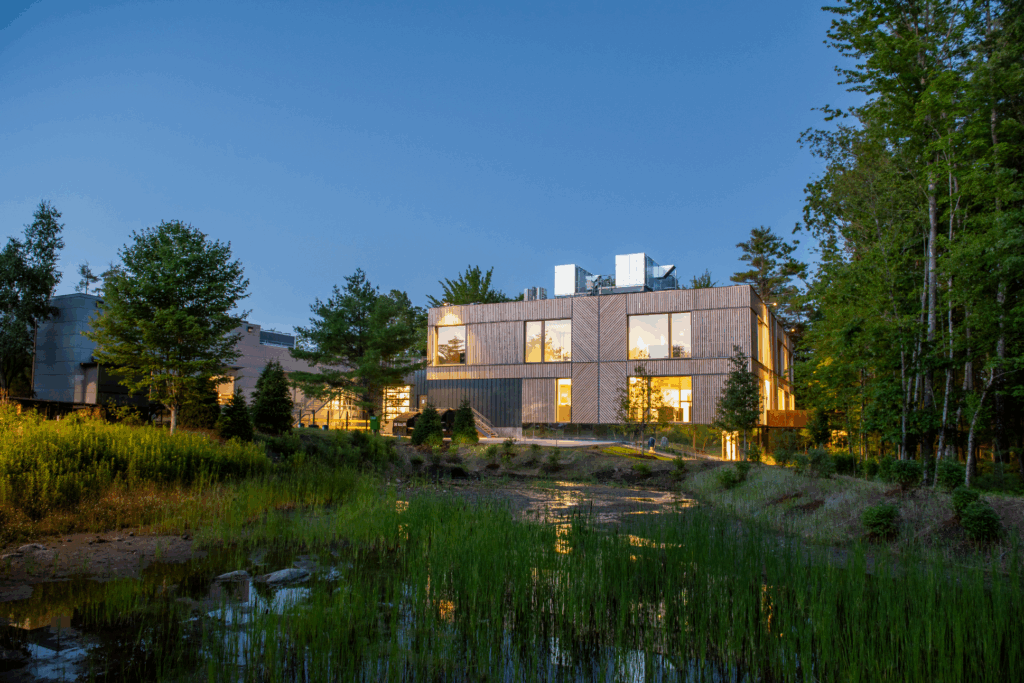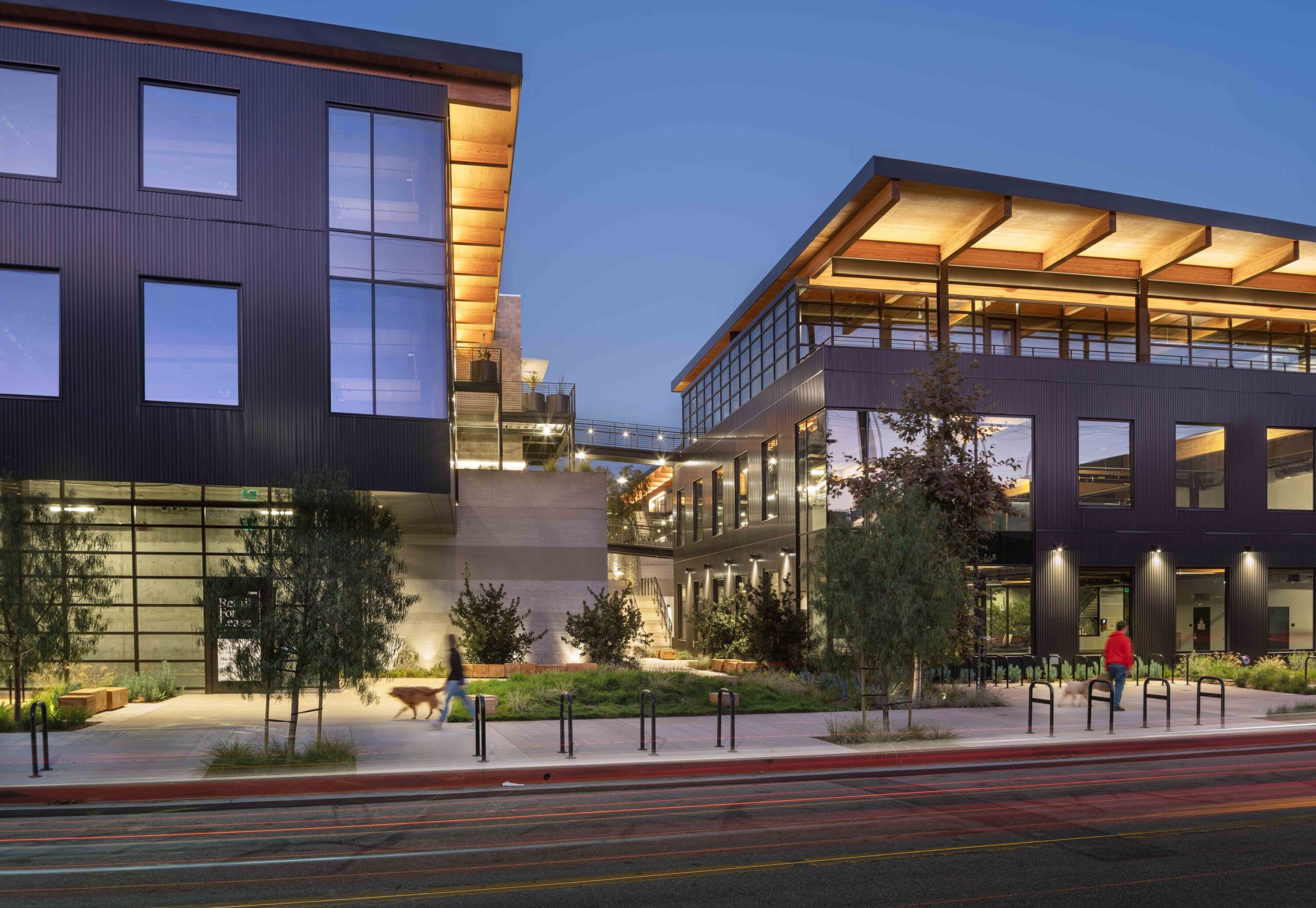Commercial
Portland Firm’s All-Wood HQ Shows Beauty and Versatility of Mass Timber
When Portland, Oregon-based architect Ben Waechter acquired the property that would become his firm’s office on Mississippi Avenue more than a decade ago, it was not a foregone conclusion that he would be building in mass timber.
“I really wanted to do a building out of a single material,” Waechter says. “Our first interest was trying to find a material that’s as simple and as few layers as possible.”
For the initial project studies, that material was autoclaved aerated concrete (AAC). “When we started getting serious, we realized that [concrete] is not an expertise of the Pacific Northwest,” he says. “There was a lot of energy around CLT, and mass timber can be a carbon sink, so it’s much more environmentally sensitive than the concrete products.”

Mississippi Workshop
The building that he recently completed, and that his firm now occupies, functions as a demonstration project for Waechter Architecture and contemporary mass timber construction.
Dubbed the Mississippi Workshop for its location in Portland’s hipster-vibed Mississippi Avenue district, the three-story-tall, 9,550-square-foot structure is configured for maximum flexibility over time. Built on an infill site, the building is C-shaped in plan and wraps a public, open-air courtyard at the building’s center. The identical east and west wings are connected by a narrow wing that contains the building’s services—stairs, elevator, and rest rooms. Each of the six suites (3 east, 3 west) have 30-feet-long clear span glulam beams resting on CLT bearing walls. Each suite is outfitted with stub-ins for a future kitchen on the north wall and future bathroom to the south.

Mississippi Workshop
“The whole thing came as a kit of parts from the factory,” Waechter says. Acting as the general contractor as well as the architect, his firm collaborated with mass timber supplier KLH.

Mississippi Workshop
“They provided the wall panels, floor panels, glulam beams, and stair components; even our elevator core is made out of CLT.”
The floors are concrete topping slabs and the exterior is sheathed in corrugated weathering steel, the only building components that aren’t wood. The decision to thoroughly embrace wood on the interior, with no additional finishes or fireproofing, has a powerful effect: In certain spaces, the effect isn’t just visual, but the warm smell of the wood is palpable, according to Waechter.

Mississippi Workshop
Each material was chosen for its ability to patina. “They potentially get better with time instead of the first day being the best day,” Waechter says. “They're materials that can get dinged up and still look good.”
The concrete topping slab conceals most of the mechanical systems in the building (fire protection is a notable exception, as its pipes run near the ceilings and pierce the glulam beams). Heating and cooling is accomplished via a hydronic system fed by a rooftop heat pump. All power and data runs within the concrete topping slab, as well.
The exterior walls are made from five-ply CLT panels with an applied weather barrier, with four inches of rock wool insulation sandwiched between it and the metal cladding. The building was built using tilt-up construction methods with 45-foot-tall CLT wall panels. “They go from the foundation up to the parapet as a single panel,” Waechter says.

Mississippi Workshop
The building is already demonstrating its flexibility:
A coffee shop occupies the front unit on the ground level while Waechter Architects uses the rear ground-level unit as a workshop. Both units on the second floor comprise the firm’s office space. And Waechter has configured the entire top level as his home.
The project should continue to yield results that can be used elsewhere. With the support of a Wood Innovations Grant from the USDA Forest Service and matching funds from the Softwood Lumber Board, Waechter Architecture will document the project for a case study. “[It] is part post occupancy analysis of the Mississippi building and part speculation on all the other ways to do an all-mass-timber building,” Waechter says. The analysis will share details, including acoustic, thermal and air quality testing conducted by the University of Oregon.

Mississippi Workshop
Project Details
- Project Name:
- Mississippi Workshop
- Location:
- Portland, OR
- Type:
- Architect:
- Timber Products:












